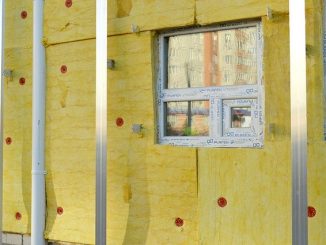
Energy efficiency actions are split into two groups:
– Passive energy efficiency encompasses all actions of renewal or improvement of buildings and energy systems (insulation of walls, renewal of the heating system, change of lighting technology)
– Active energy efficiency includes all actions of optimization of uses either by means of instruments (programmable clocks, detectors etc.) or by acting on behaviours
Obviously, manufacturers shape an image of energy efficiency that is consistent with the prism through which they look at these stakes: that of their positioning. Legrand, Siemens, Schneider Electric and Hager highlight the virtues of active energy efficiency, while insulation and window manufacturers focus on the benefits of passive energy efficiency.
All of them claim exceptional performance, a reduction in consumptions at double digits. But what is really happening? Are these actions as fruitful as we can read or hear? Are these different actions complementary or competing?
To answer these questions, let us distinguish between old buildings with low thermal performance and new low energy buildings.
In the so-called low-energy buildings, built according to the latest standards, the performance of the electricity-consuming systems and the thermal systems as well as the insulation of the building are optimal. These buildings offer the potential for a high theoretical energy performance which can be “degraded” either by non-virtuous behaviours (leaving windows open during periods of heating, frequent bathing, etc.) or by excessive consumption by private uses.
In these buildings, passive energy efficiency actions do not, in theory, offer any gain potential, whereas active energy efficiency actions allow to achieve the nominal performance permitted by the building. These actions therefore offer a potential performance depending on the behaviours that they will be able to correct or to frame. This performance will vary by household: difficult to articulate seriously a figure representing what these actions will allow not to lose.
In older buildings with moderate or poor thermal performance, the heating must be optimized. Any regulation and scheduling systems of the heating brings, in these buildings, a performance all the more important as the thermal inertia of the frame is low.
Of course, passive energy efficiency actions, will also yield high performances, in theory much higher than active energy efficiency actions. But they are more expensive and the return on investment is often over periods of 10 to 30 years. This is why cities, especially those that have decided to be Smart, have to design renovation and home improvement programs as well as the funding mechanisms that accompany them to stimulate these actions.
In these buildings, either the owner decides to invest in a thermal renovation, possibly subsidized, to obtain higher energy savings and the actions of passive energy efficiency will then have an importance close to that described for new buildings, or the thermal performance of the building remains permanently low and active energy efficiency actions are essential and allow significant savings (in the order of 20% or more).
The different actions are never competing but they have different objectives and cases of optimal use. To the various local professionals to help the consumers to sort between the various messages of the industry and to enlighten them on the actions that are best adapted to their situation.




Leave a Reply